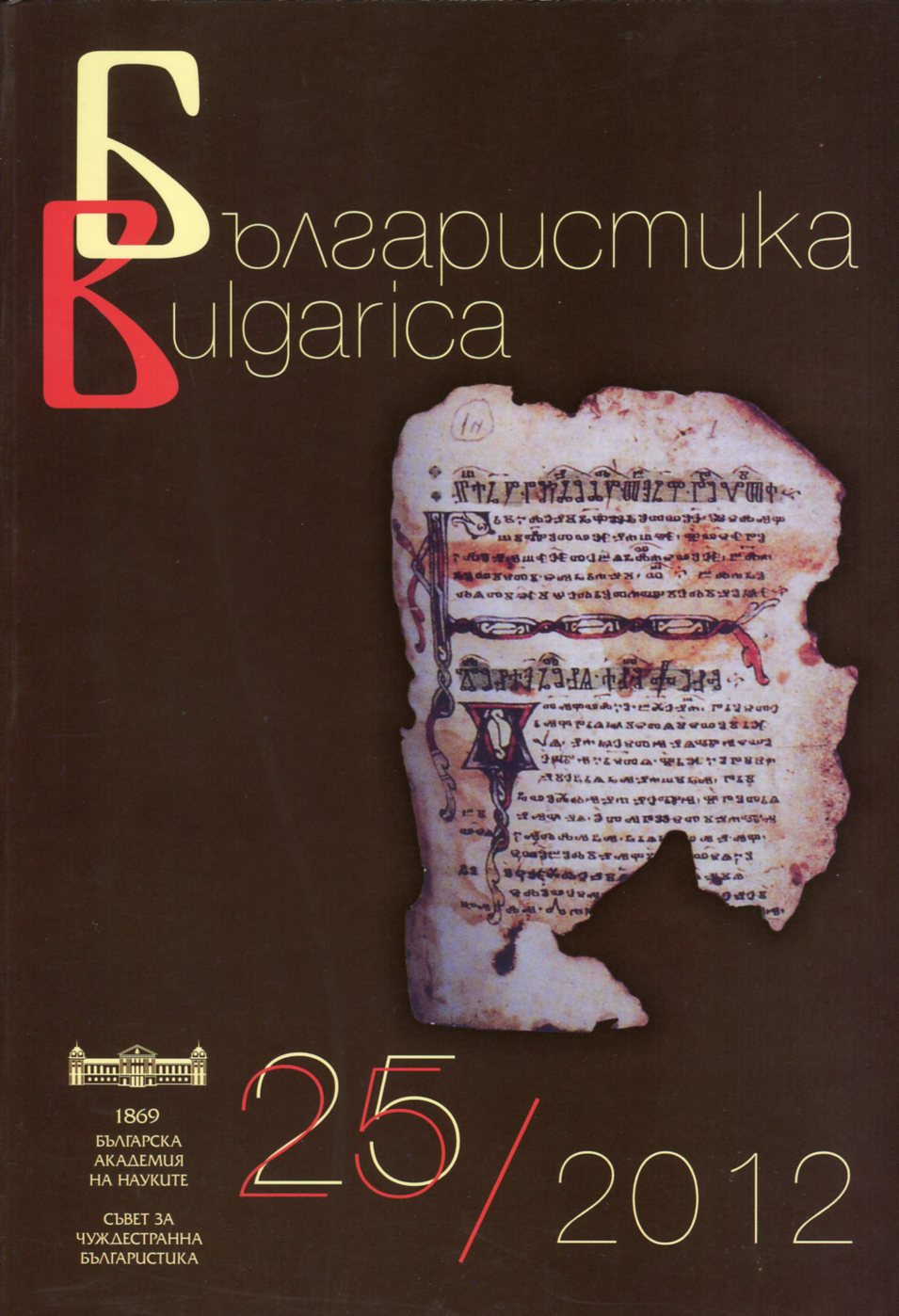
We kindly inform you that, as long as the subject affiliation of our 300.000+ articles is in progress, you might get unsufficient or no results on your third level or second level search. In this case, please broaden your search criteria.

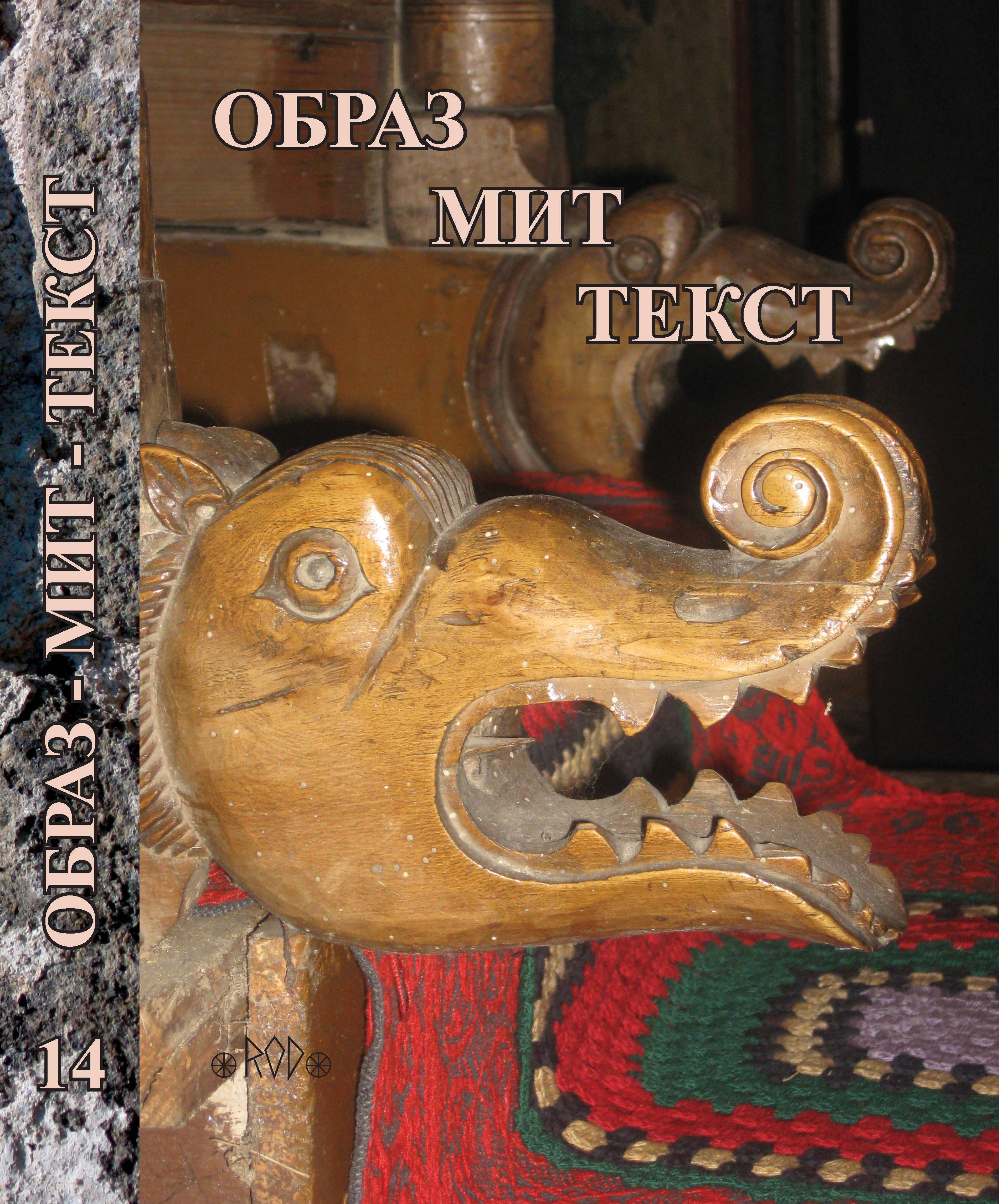
The article deals with an episode in the history of Soviet folkloristic, namely a prohibition of certain genres of folklore. In 1920s there occurs a boom of recording modern urban folklore, but in 1930s the recorded texts were destroyed or concealed in restricted folklore storage of large research institutions. Based on archival materials the article draws conclusions of the reasons for recording unfavorable (criminal, heroic, political) texts and the reasons for placing them into the restricted storage (“spetskhran”). The article is appended with published documents stored in Petersburg archives.
More...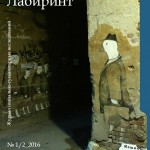
This article discusses the priority directions of the Russian zemstvo’s activities during the fifty years of its existence. Among them are, first and foremost, health, education, development of peasant farming and local communications (roads and telephony). The author pays special attention to the appearance of new guidelines in local authorities’ work in the period under consideration.
More...
The article presents the main types of synonymous prepositions in the Russian literary language of the first half of the 19th century. The author provides the examples of each type based on literary texts of the period under consideration and in accordance with the existing scientific classifications. The paper reveals such trends in the development of prepositional synonymy as the flexibility of the rules of using morphological synonyms and the stylistic reassessment of the components of synonymic rows.
More...
The development of meanings similar to philosophical ideas is revealed in the first chapter of “Eugene Onegin”. A.S. Pushkin based them on the complex and contradictory relationship between the protagonist and the way of his life. Onegin’s dependence on the latter and attempts to assert his individuality in the whirlwind of everyday life give rise to a number of artistic problems, which are close to philosophical reflections on the meaning and purpose of human existence, happiness and its sources, true and false values, as well as their ability to fill life with genuine or illusory sense. The paper proves the thesis that such artistic and philosophical ideas organize the internal artistic unity of the first chapter, turning it into an exposition of “Eugene Onegin” as a philosophical novel.
More...
Representation of the Soviet past in modern Russian prose still demands comprehension. This paper is devoted to the analysis of the Soviet discourse in M.Yu. Elizarov’s novel “The Librarian” (2007), the 2008 “Russian Booker” winner. The study is performed using a complex method, which combines discourse, cultural-historical, structural-semantic, and conceptual types of analysis. The Soviet discourse is considered in relation to the national Russian one, which is also presented in the novel. It is demonstrated that Russian and Soviet concepts come into collision. The conflict is realized in a cryptological plot through the image of library, which is emblematic of postmodern literature. The national Russian discourse is embodied in such traditional feminine images as elemental force, proximity to the nature, destructive orientation, and provinces. The Soviet discourse is based on such traditional masculine images as aspiration for orderliness, orientation to logic, and capital. Female and male personifications stand in a symbolical relation with each other. M.Yu. Elizarov introduces the sacral image of the Protection of the Holy Virgin, which is urged to unite the Soviet discourse with the national Russian one. The conclusion is made that the Soviet utopia does not unite with the national Russian tradition despite the introduction of the Protection. The Divine Union declared in the novel remains unrealized.
More...
The presence of a particular journalistic thinking, spiritual syncretism, was detected in F.M. Dostoevskii’s “Writer’s diary”. The literary analysis and specific keywords were used for this detection. According to the results of our study, F.M. Dostoevskii’s spiritual syncretism is characterized by spiritual solutions of the political, economic, and social problems, as well as by the fusion of Enlightenment and religious ideas.
More...
The paper, for the first time in Russian history, considers the journalistic and literary critical statements of M.N. Katkov, a leader of the traditional conservative trend in political journalism during the late 19th century, devoted to A.S. Pushkin. M.N. Katkov’s journalistic Pushkiniana is the most significant one among other contemporaries and covers the period from 1838 to 1880. M.N. Katkov numerously appealed to the figure of A.S. Pushkin throughout his journalistic activity. The interpretations of A.S. Pushkin by M.N. Katkov in different years are analyzed.
More...
The paper analyzes the aesthetic meaning of adjectives in A.S. Serafimovich’s prose. The most typical groups of adjectives are singled out based on their semantic and functional features, which are analyzed considering the main idea and problems of the prose works, as well as the author’s view of the world. Special attention is paid to the syntagmatic relations between adjectives and dependent nouns. The influence of a particular linguistic context on the semantic and emotional contents of adjectives is investigated. The semantic relations between parts of complex words are discussed. Occasionalisms used by A.S. Serafimovich are distinguished.
More...
The paper discusses verbal manifestation of the concept of wealth in F.M. Dostoevskii’s novella “Uncle’s Dream”. The content of the concept in the novella is studied in accordance with the field structure of the concept: core; close and far peripheries. It is proved that the peripheries reflect the peculiarities of F.M. Dostoevskii’s concept of wealth and the specifics of the artistic image of reality in the novella “Uncle’s Dream”. The implementation of the concept of wealth in the novella indicates F.M. Dostoevskii’s individual perception of the phenomenon expressed by it. The study of the concept allows to reconstruct the artistic image of the world in the novella and the idiostyle of the author.
More...
The life of V.G. Korolenko was connected with different regions of Russia. His artistic, journalistic, and epistolary heritage reflects his impression from visits to the capital, central cities, and provincial towns. The paper reviews manifestations of the imagery in “urban texts” of the local author from the point of social and literary discourse. V.G. Korolenko is characterized as a “genius of locality”, who artistically created detailed “portraits” and sketches of St. Petersburg, Moscow, Glazov, Simbirsk, and Poltava. The writer also expressed his own view on various toposes of the Volga Region in literature: Nizhny Novgorod, Pavlovo, Gorodets, and Arzamas (“God’s town”). V.G. Korolenko’s literary works devoted to urban description are analyzed using the comparative approach rather than separately: by contrast with the understanding of loci in folklore, as well as works of other writers (I.A. Goncharov, N.N. Zlatovratskii, L.N. Tolstoi, and P.I. Melnikov-Pecherskii) and regional ethnographers (N.P. Antsiferov, S.N. Durylin, N.E. Mednis, etc.). Biographical, sociological, historic-cultural, and linguistic methods are used in the paper for analysis of the author’s literary works in the local aspect.
More...
A.P. Chekhov actively used animalistic surnames and zoonominations in his early works, thereby attributing appropriate psychological and moral qualities to his characters. As a rule, they allow to achieve the comic effect, on which the writer’s artistic world is based, as well as reveal his personal attitude to the character. A.P. Chekhov’s characters are not only given surnames, which are semantically associated with animals, birds, insects (Loshadinykh, Perepelkin, Chervyakov, etc.). The author also invents bright nominations which are semantically related to the habits of animals (Lyagavaya-Grizlova, Khryukin, Ukusilov, etc.) and animalistic nicknames (Il’ka Sobach’i Zubki, Shchur, Sychikha). Furthermore, animal names is one of the main methods of euphemization (“dissolute pig”, “silly goose”, “donkey”, etc.). The analysis of charactonyms with the zoological code shows the connection of A.P. Chekhov’s short stories with the literary tradition of that time and enables understanding of the author’s underlying ironic message.
More...
The paper for the first time examines unpublished letters of N.M. Karamzin to E.A. Karamzina (nee. Kolyvanova) against the background of the examples of love letters given in “Pismovniki …” of the 18th–early 19th centuries. The purpose of this work is to present the formation of author’s individual modality in Russian literature in more detail and to show more vividly and specifically the personality traits of N.M. Karamzin by the example of his epistolary heritage. The objectives of the paper are to examine the motivic structure and composition of the letters, to describe the basic motivic complexes of an “exemplary” love letter, to trace changes in the epistolary genre at the turn of the century, and to specify the sources of love phraseology in private letters of this period (“Pismovniki …”, French sentimental novel). The study establishes a special status of a love message, as well as its exclusive right to violate the canon, to disregard the established norms and patterns, which, in turn, becomes a normative characteristic of the genre. In the letters to E.A. Karamzina, N.M. Karamzin often used ready-made expressions, certain bookish clichés. At the same time, the diverse and unpredictable reality does not fit into the paradigm of rhetorical culture. It often precludes the use of stable formulas and causes the author of the letters to develop his own unique style. The obtained results reveal genre and style originality of N.M. Karamzin’s letters to his wife, where the letters represent a universal genre that combines in itself addressing his wife with love and concern, conversations with the estate manager, information about N.M. Karamzin’s health (the mes-sages on 1805), reporting from a place of epoch-making events, interpretation of the historical mission of Russia, a prayer to God for the salvation of his loved ones and his motherland (the letters of 1812 from besieged Moscow); court chronicle, small talk, the historiographer’s diary, moral and philosophical conclusions, passionate love declarations, parental blessing, etc. (the letters of 1816 from St. Petersburg). One of the unpublished letters of N.M. Karamzin to E.A. Karamzina is presented for the first time (1805).
More...
The paper considers comparison of the literary methods of two most prominent Russian satiric poets, A.G. Arkhangel’skii and A.A. Ivanov. Their literary heritage was analyzed by the researches only separately and not in full. Comparison of the authors has been done for the first time. Both satirists did a lot for the evolution of the genres of verse parody and epigram. The development of these genres in the first part of the 20th century went under the sign of A.G. Arkhangel’skii, the second part – under the sign of A.A. Ivanov. A.G. Arkhangel’skii is considered to be the founder of the genres of parody and epigram in Soviet literature. A.A. Ivanov cannot be called his direct follower, for he just took the vacant place of a parodist in the late Soviet literature. The literary strategies of A.G. Arkhangel’skii and A.A. Ivanov were different. A.G. Arkhangel’skii parodied only undoubtedly prominent or widely popular authors. Unlike him, A.A. Ivanov was ready to parody every poet, both famous and unknown if he found that their poems had some failed lines, expressions or images. Many of A.A. Ivanov’s addressees became known all over the country only after their lines had been stated by the satirist as an object of parody in the popular TV-show “Vokrug Smekha” (Around the Laughter). A.G. Arkhangel’skii in his works bore in mind the classical system of genres and thought his goal was to understand the literary-artistic world of the satirized author. Both best and third-best litterateurs became objects of his smart and witty analysis. Therefore, A.G. Arkhangel’skii implemented the philological approach in his parodies and epigrams. A.A. Ivanov, having developed in the Soviet time when many previous achievements of the native culture had been long forgotten or dismissed, found his main goal in withstanding ignorance, imitation, banality, and playing familiar terms with classics. Such approach should be characterized as guarding and enlightening. The epigrams and parodies of A.A. Ivanov were not mere literary gestures, but also had some didactic functions. The only criterion for both standard and taste was the parodist’s individual point of view. Thus, the balance between playing jokes and moralizing was not always observed.
More...
The paper deals with the issues related to analysis of some special features inherent in the literary genre of travelogue. The research is focused on the artistic originality of “The Word on the Way” (2010) by Pyotr Vail. The ways of constructing the dialog in the communicative chain, by which the information is transferred from the author to the reader, are studied. Pluralism as the main principle in the organization and structuring of the material reveals the importance of the author’s image in the inner world of the text. The relation between the concepts of “native” and “foreign” is fundamental for understanding the artistic originality of “The Word on the Way”. The originality of this binary opposition in Pyotr Vail’s collection actualizes the significance of the USSR’s role in the process of constructing the world’s history. The author’s attitude to the well-known historical facts appeals to the recipient consciousness, thereby engaging them in active mental activity. In this case, the book lined up a trusting relationship with the recipient. Despite the dominant role of the author where the narrator acts as a slave of the subject, it is necessary to touch upon the process of bilateralism. It promotes the recipient’s living response to the provocations given in the idiomatic statements.
More...
This paper is devoted to the writing style of Chuck Palahniuk, a modern American author. The writer owes the international acknowledgment to his scandalously famous novel “Fight Club”. He has been named “the king of counterculture” due to the nihilistic themes and motifs used by him. Ch. Palahniuk’s creativity has been often examined in the light of the influence of the romantic tradition; special attention has been paid to the existential problematics, which appears to be the major focus of many of the writer’s novels. Ch. Palahniuk’s most emblematic works, especially his non-fiction book “Stranger than Fiction: True Stories”, as well as the novels “Fight Club” and “Invisible Monsters”, served as the basis for analyzing the author’s creativity in this paper. Ch. Palahniuk’s numerous interviews and the works of a number of American researchers and scholars, who associate Ch. Palahniuk’s creativity with the traditions of the New Journalism, were also considered. The conclusion was made that the technique used by Ch. Palahniuk in most of his works makes it possible to consider them in the light of postmodernism. Minimalism and dynamism are the key features of the writing style of Ch. Palahniuk, which make his works more understandable and attractive to the general public.
More...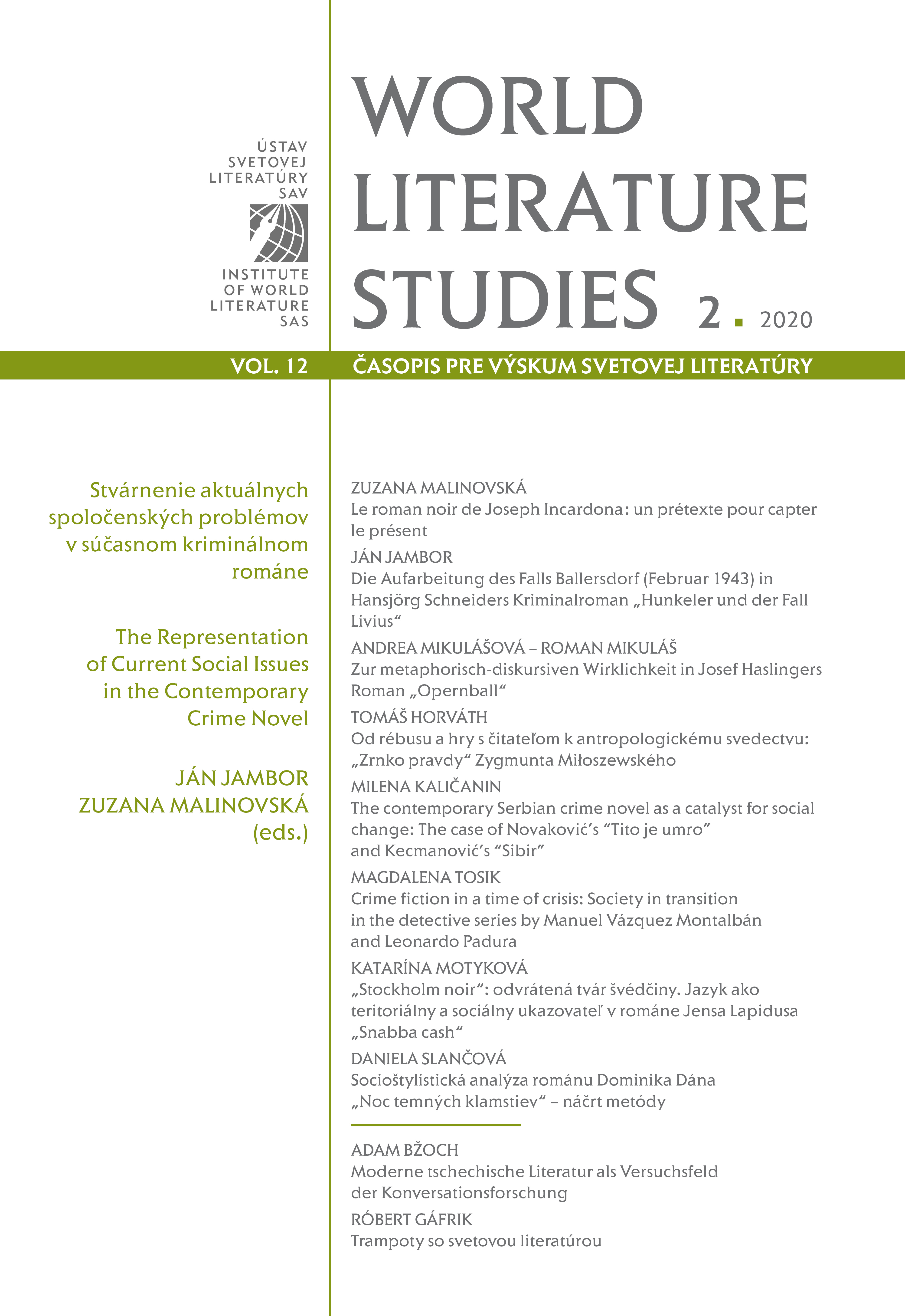
Review of: MICHAL JAREŠ – PAVEL MANDYS: Dějiny české detektivky [The History of the Czech Detective Novel] Praha: Paseka, 2019. 488 s. ISBN 978-80-7432-977-7 EVA MALITI FRAŇOVÁ: Andrej Belyj / Celistvosť (v) mnohosti [Andrei Bely / The Wholeness of (in) Multiplicity] Bratislava: Veda, vydavateľstvo SAV, Ústav svetovej literatúry SAV, 2018. 239 s. ISBN 978-80-224-1696-2 ANDREA BOKNÍKOVÁ (ed.): Poetika poézie a jej prekladu [Poetics of Poetry and Its Translation] Bratislava: Univerzita Komenského v Bratislave, 2018. 458 s. ISBN 978-80-223-4638-2 NIKOL DZIUB – FRÉDÉRIQUE TOUDOIRE-SURLAPIERRE (eds.): Comparative Literature in Europe: Challenges and Perspectives Cambridge: Cambridge Scholars Publishing, 2019, 265 pp. ISBN: 978-1-52-75-2226-1 THOMAS OLIVER BEEBEE (ed): German Literature as World Literature. New York – London: Bloomsbury Academic 2016. 214 pp. ISBN 978-1501317712
More...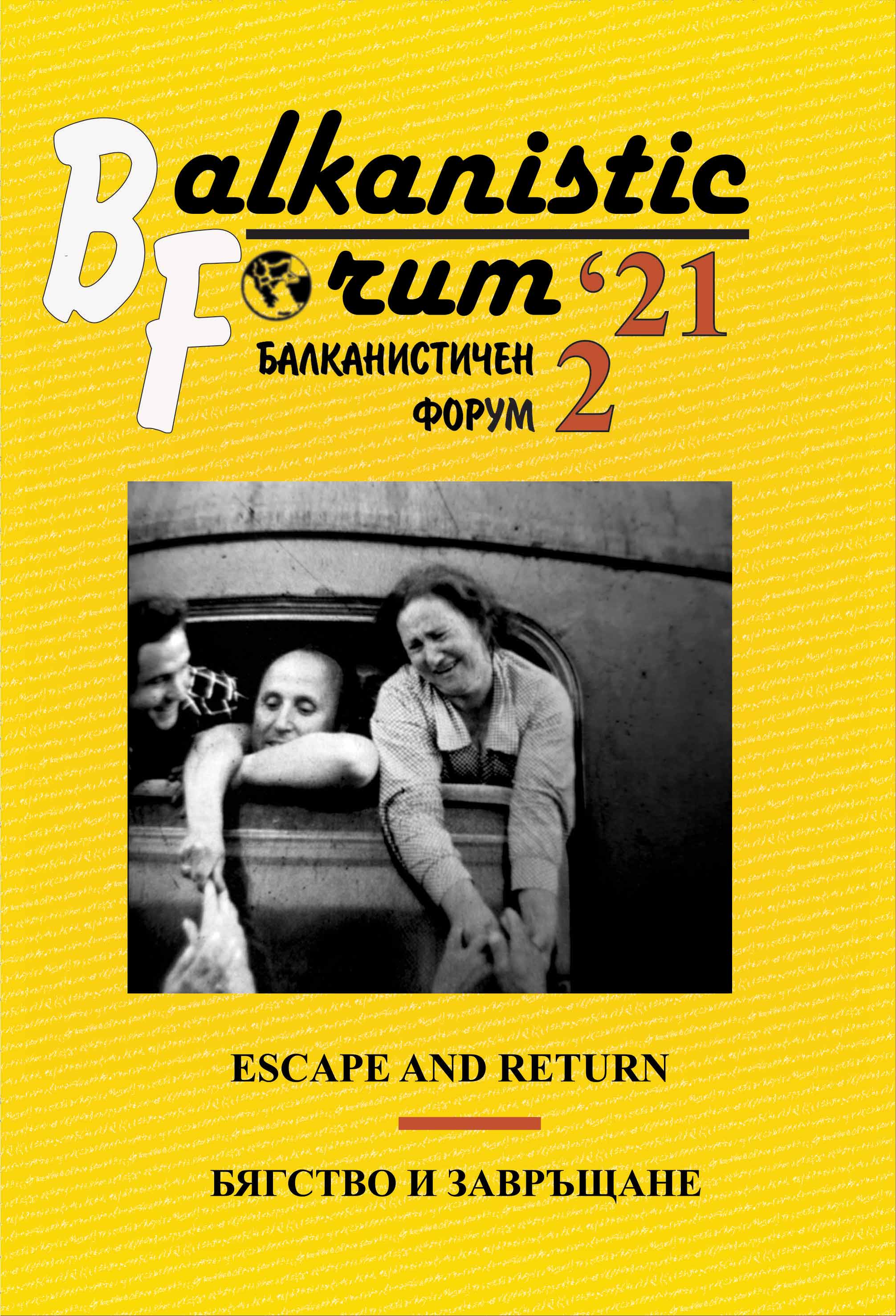
The paper is concerned with the issue of textual visualisation of Caucasus in Russian travelogues performed in 1820-1830th – the decades of the Caucasus War escalation. Taken as example entries from the travelogues of I.T. Radojitsky and V.B. Bronevsky published in Russian Empire in early XIX c., the authors show deep connections of the outlook on the region and people inhabited it with the foundation of the Orientalism as an approach to describing native people of the Imperial frontier.The research underlines the importance of scrutinised study of travellers experience they endured on voyages by the Caucasus in deep connection with the political course on “pacifying” the region, proclaimed by the Imperial authorities. Racy images of the Cossacks, Russian settlers, native peoples and “unpacified” highlanders were performed in order to legislate the Imperial annexation of lands and their acquisition by Russian civilisation. Together with the motives of showing huge contrast between the pastoral life of Russian peasants and towns dwellers with the backwardness of the natives, matched the common ideas of European colonialism, the authors show public awareness of the “unpacified” highlanders expressed by the travellers in the image of “a Circassian”. We traced features of Russian literature Romanticism in the travellers depicture of a Highlander as a “noble savage” did for a living by robs and plunders. The authors came to the conclusions that images, elaborated by Russian travellers and righters were utter vivid and influenced on the perception of the region by Russian layman until the early XX c.The paper is concerned with the issue of textual visualisation of Caucasus in Russian travelogues performed in 1820-1830-th. – the decades of the Caucasus War escalation. Taken as example entries from the travelogues of I.T. Radojitsky and V.B. Bronevsky published in Russian Empire in early XIX c., the authors show deep connections of the outlook on the region and people inhabited it with the foundation of the Orientalism as an approach to describing native people of the Imperial frontier. The research underlines the importance of scrutinised study of travellers experience they endured on voyages by the Caucasus in deep connection with the political course on “pacifying” the region, proclaimed by the Imperial authorities. Racy images of the Cossacks, Russian settlers, native peoples and “unpacified” highlanders were performed in order to legislate the Imperial annexation of lands and their acquisition by Russian civilisation. Together with the motives of showing huge contrast between the pastoral life of Russian peasants and towns dwellers with the backwardness of the natives, matched the common ideas of European colonialism, the authors show public awareness of the “unpacified” highlanders expressed by the travellers in the image of “a Circassian”. We traced features of Russian literature Romanticism in the travellers depicture of a Highlander as a “noble savage” did for a living by robs and plunders. The authors came to the conclusions that images, elaborated by Russian travellers and righters were utter vivid and influenced on the perception of the region by Russian layman until the early XX c.
More...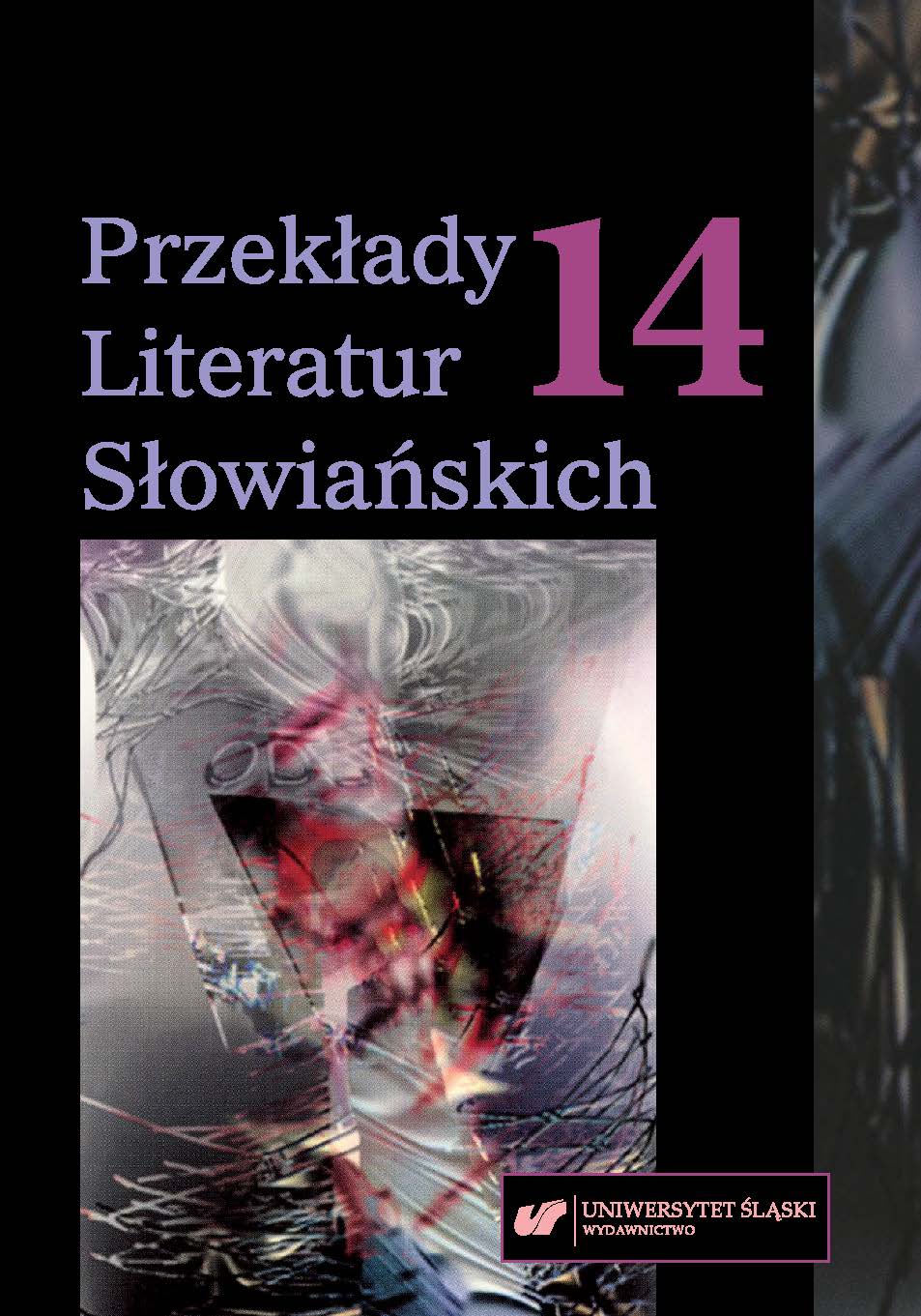
The paper examines difficulties in translating meaningful (allusive) proper names and selected paratexts in the novel S.N.U.F.F. by Victor Pelevin. The chosen exemplification material shows the multi-dimensionality of Victor Pelevin’s prose and the resulting translation problems. Translation is transferring a text from one intertextual and cultural space to another. For this reason, it inevitably results in a loss of some intertextual references and a gain of new ones.
More...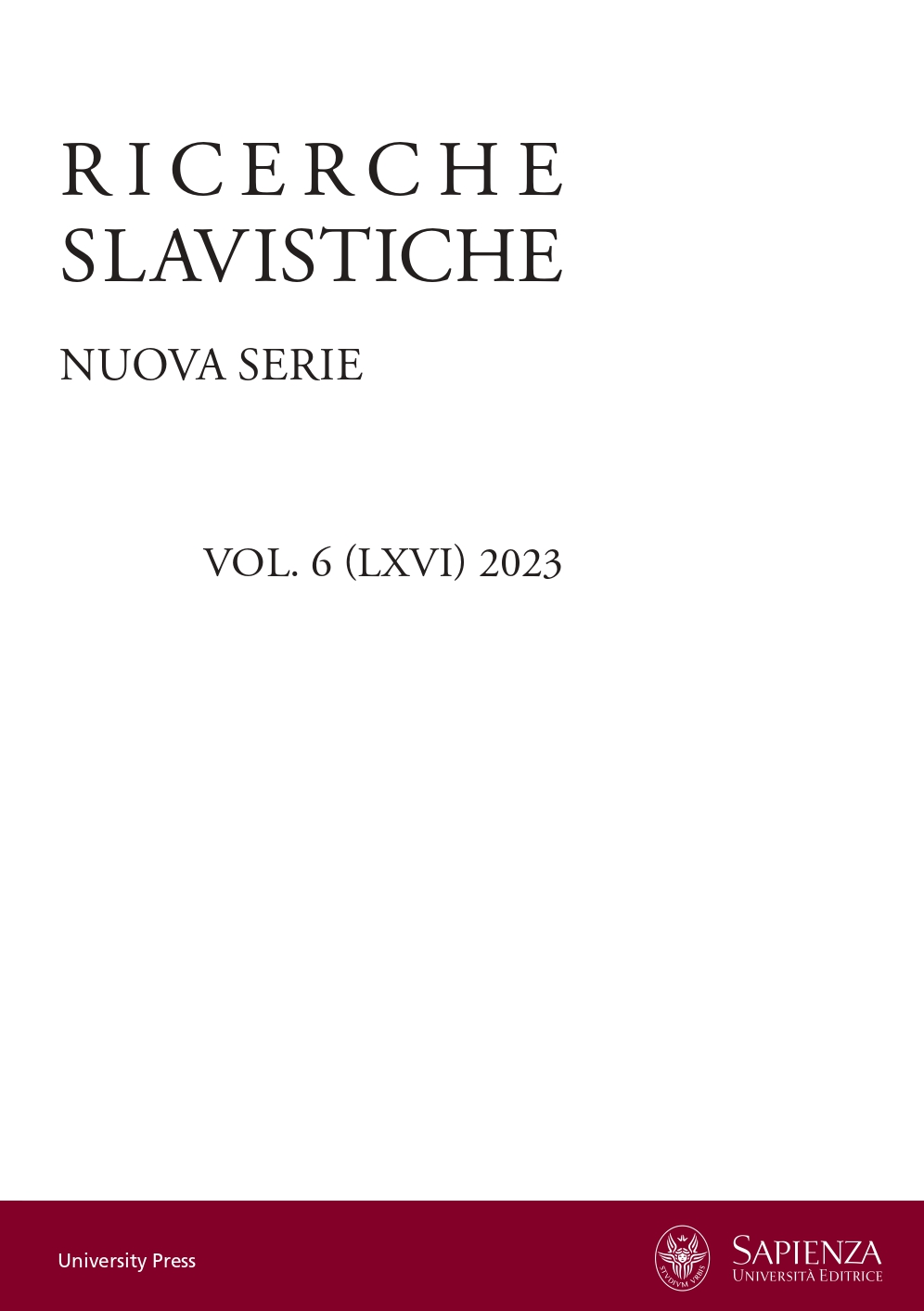
Considering the long-lasting co-existence of different languages and cultures in Central and Eastern Europe provides an interesting perspective on the cultural history of that part of continental Europe, full of fruitful intersections, and of conflicts. This section of “Ricerche Slavistiche” contains some articles dealing with relations, connections and intersections within the Slavic and the Germanic world, and in its vicinity.
More...